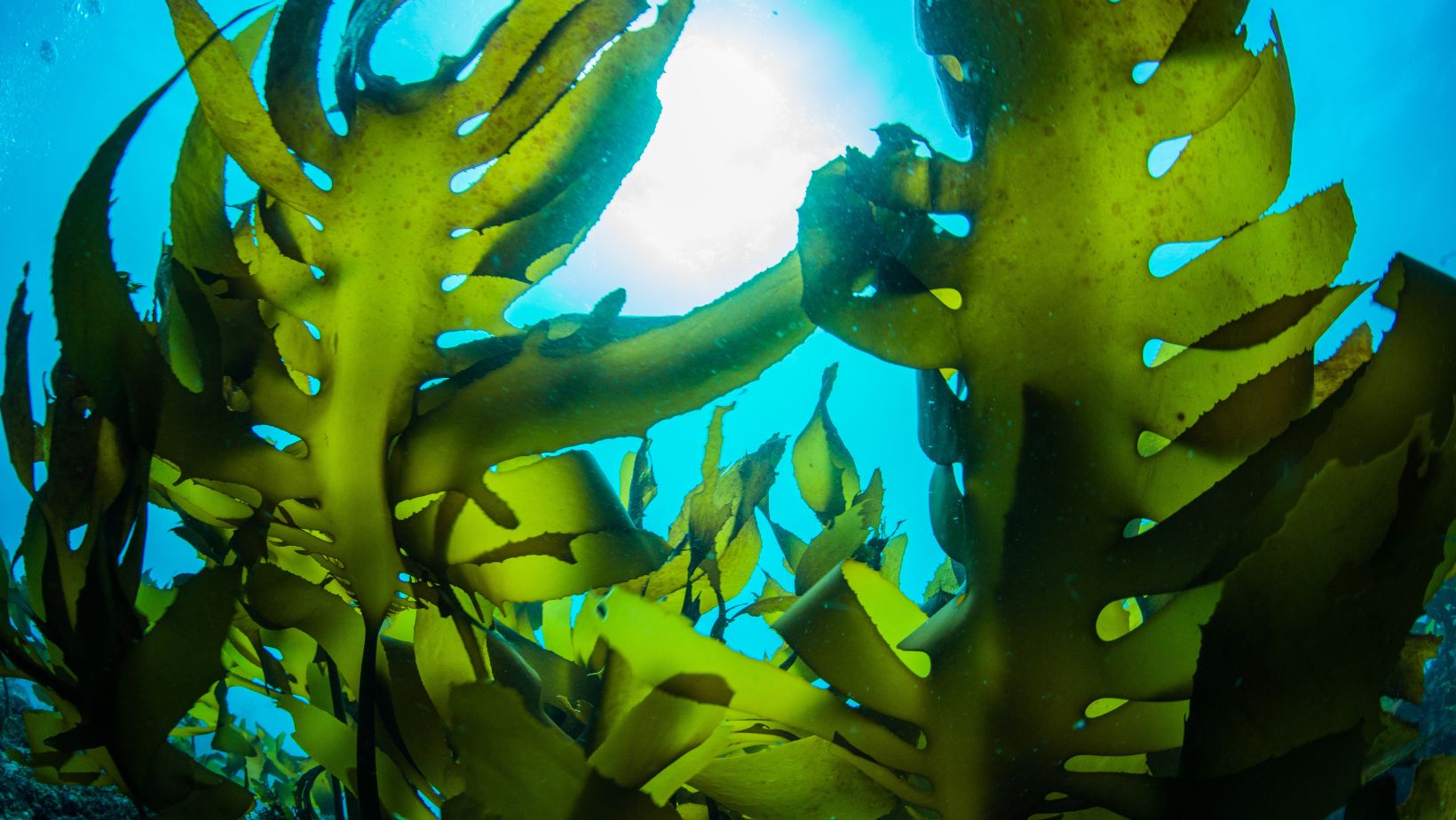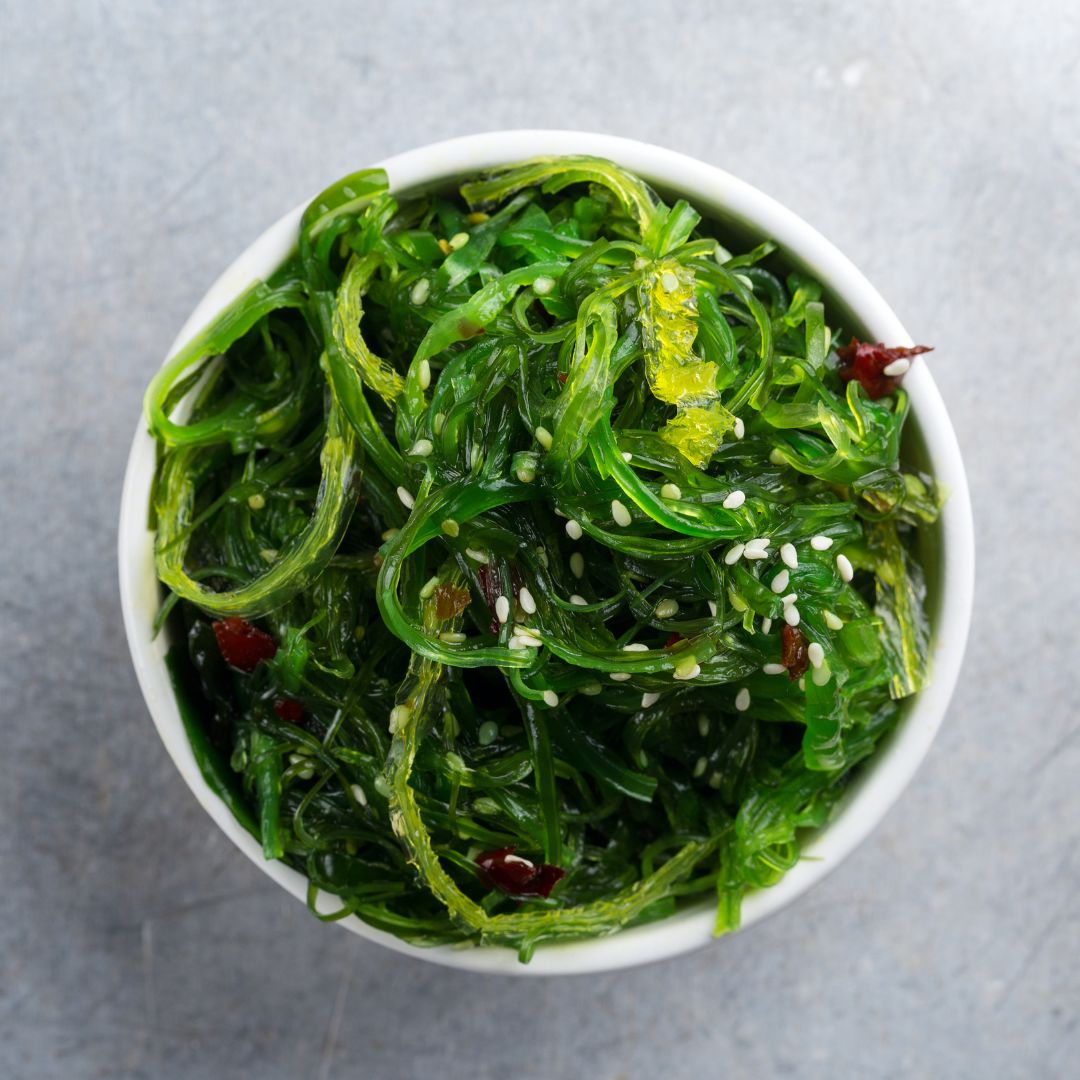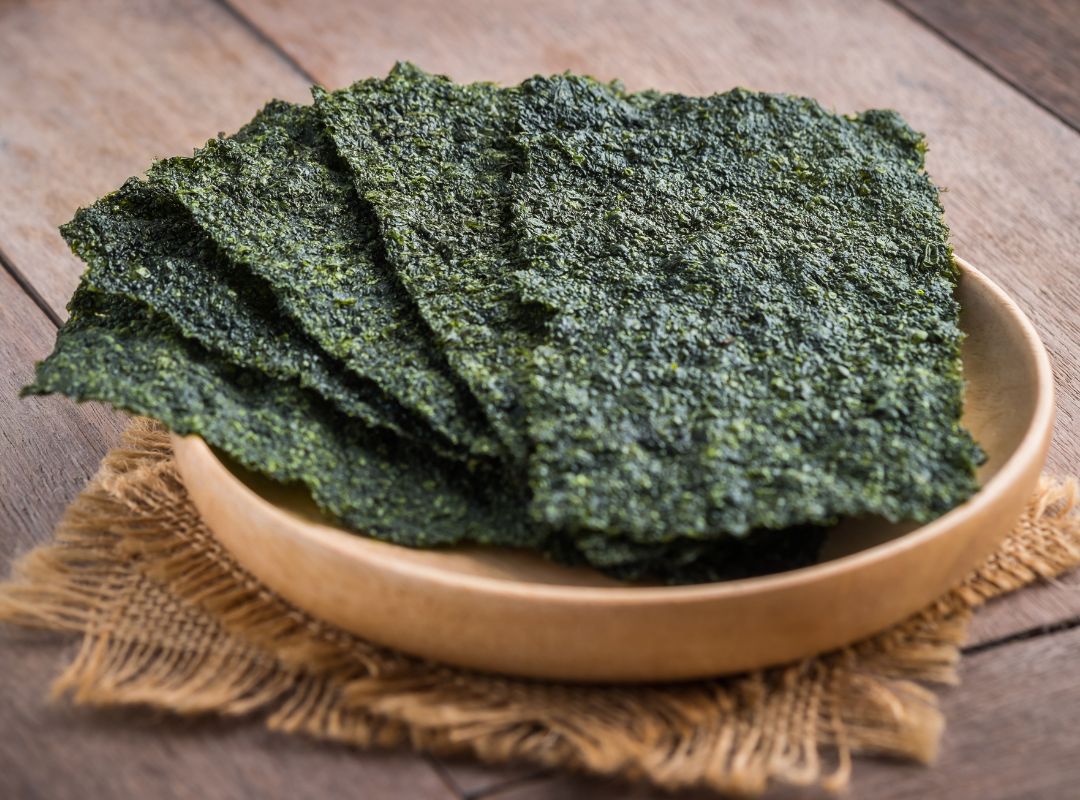Super Seaweed
May 23, 2023
Posted by: Monique Parker

In my practice I have had female clients, who had symptoms that are often seen when the thyroid is not functioning properly. Weight gain, dry skin, brittle nails, thinning hair, fatigue, constipation, brain fog and feeling cold all the time. I sent them to their GP to get their thyroid function tested, to see if they had an underactive thyroid.
Hypothyroidism (an underactive thyroid) is quite common. It affects 1 in 70 women and 1 in 1,000 men according to the NHS. The thyroid is a small, but vital organ, that is located in the front of the neck. If you think of the cells in your body as an orchestra, the thyroid is the conductor.
It makes hormones that are necessary for the cells to work normally.
The clients I mentioned before, had their tests done, and the results came back negative.
So, why did they have the symptoms then? Sometimes it can be a case of ‘undeveloped’ or subclinical hypothyroidism, where there are just about enough thyroid hormones being produced and you’re on the fringe of an underactive thyroid. Unfortunately, there is disagreement among experts on what levels of thyroid hormones are normal and what levels indicate a thyroid issue.
My next step was to get the clients’ iodine levels checked. And this is where it becomes interesting.
All clients tested had very low iodine levels. You probably wonder what this has to do with the thyroid.
The thyroid cannot make enough hormones if there is not enough iodine. Thyroid cells need iodine and other ‘ingredients’ to make thyroid hormones. One of the thyroid hormones, thyroxine, is made up of about 65% iodine!
A study done in the UK in 2011, involving 800 teenage girls, showed that 70% of the girls were iodine deficient. The World Health Organisation recommends that iodine deficiency in people should be corrected through salt iodisation. However, most salt on sale in the UK is not iodised and iodised salt is not used in food processing. We have to make sure to get our iodine from somewhere else then.
Good sources of iodine are milk and other dairy products, fish (white fish containing more iodine than oily fish), seafood, eggs, sea vegetables such as seaweed and samphire. As you can tell from the list of foods, vegetarians and especially vegans, could be at risk of iodine deficiency. The daily requirement for iodine is 150mcg for adults, and 200mcg for pregnant and breastfeeding women. One large egg provides about 24mcg of iodine.

Seaweed has become quite popular in the UK. Apart from being rich in iodine, seaweed is also a good source of omega 3 fatty acids, fibre, vitamins A, B, C and E, protein and polyphenols. However, different seaweeds have different amounts of iodine. Seaweed can provide anything from 16mcg, to as much as 2,984mcg of iodine. That’s why you need to be careful. Dried nori and Wakame are seaweeds with a reasonable iodine content of 21mcg/gram and 172mcg/gram respectively. However, dried kelp contains on average 1,327mcg/gram and Kombu, even more, with 2,650mcg/gram.
Conclusion: we have to make sure we get enough iodine from our food for a healthy thyroid, but we need to make sure we’re not getting too much. Excess iodine can cause some of the same symptoms as iodine deficiency, including goitre (an enlarged thyroid gland), thyroid inflammation or thyroid cancer. If you can get enough iodine from your diet, you don’t need to supplement. Don’t forget that some multivitamin-and mineral formulas contain iodine. Vegetarians, and especially vegans, might want to supplement, but I always recommend getting your iodine level tested (urine test) before supplementing. Always retest after 3 months of supplementing. If you already have an issue with your thyroid or you are taking medication, always check with a health practitioner before supplementing.

And if you don’t know how to incorporate seaweed into your diet…. Here is an easy lunch idea.
Spread some hummus on a nori sheet, cover with shredded carrot, water cress, cucumber strips, spring onion or any other vegetable you fancy. Sprinkle with a bit of tamari and roll it up. Extra bonus: nori is one of the plant world’s richest sources of protein!
References:
https://www.ncbi.nlm.nih.gov/pubmed/19460960
https://www.ncbi.nlm.nih.gov/pmc/articles/PMC3074887/
https://draxe.com/iodine-deficiency/
http://www.bbc.co.uk/news/health-13034582
http://www.bbc.co.uk/news/health-38895877
https://www.nhs.uk/conditions/underactive-thyroid-hypothyrodism/
https://www.ncbi.nlm.nih.gov/pubmedhealth/PMH0072785/
https://www.ncbi.nlm.nih.gov/pubmedhealth/PMH0072784/
https://www.ncbi.nlm.nih.gov/pubmed/22054935
https://www.ncbi.nlm.nih.gov/pubmed/24697280
https://www.ncbi.nlm.nih.gov/pmc/articles/PMC5387034/
https://www.ncbi.nlm.nih.gov/pmc/articles/PMC5302319/
http://www.ukiodine.org/iodine-in-the-uk/






